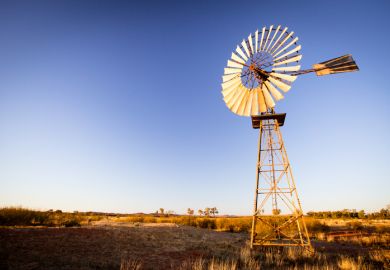A “golden age” of higher education is giving way to an era of scarcity and derision marked by funding stagnation and a hostile media, Australian educators have been warned.
Scott Bowman, the vice-chancellor of Central Queensland University, told the Regional Universities Network conference that the sector had experienced a dream decade of uncapped student places, structural adjustment grants and a multibillion-dollar education infrastructure fund.
But those “funding buckets” are now empty, and Australian universities face a UK-style future in which they will “have to make videos to justify their existence”, the British-born vice-chancellor told the forum on Queensland’s Gold Coast.
“When I look at what’s happened in the UK, it worries me a lot,” he said. “The way universities have been rubbished in the UK is terrible. We’re often five to 10 years behind the UK, and I think what you see there will come here.”
Professor Bowman told journalists that the evolving view about universities was “like racism”, with people disliking all higher education institutions except those they knew personally. And while “whingeing about government funding” was part of every vice-chancellor’s job description, the sector had “been on a good wicket” over the past decade. “I don’t think we’re going to be on that good wicket going into the future,” he said.
He added that the demand-driven funding system had saved his own institution from folding five years ago, when it had become overly dependent on foreigners who were enrolled for migration rather than education purposes. CQU was forced to overhaul its admission requirements for the international students who then constituted 52 per cent of its enrolments.
“We went from accepting almost anyone to rejecting 80 per cent. That nearly killed us. But because we were getting domestic growth, we could weather that storm. If we hadn’t had access to those uncapped places, we couldn’t have got out of that bind.”
RUN chairman Greg Hill, vice-chancellor of the University of the Sunshine Coast in Queensland, cited three local projects – a proposed campus on Brisbane’s fringe, a neuroscience institute and a national netball team – as examples of initiatives “that wouldn’t have got off the ground” in the current funding climate.
The new campus’ future was secured after the federal government guaranteed it growth funds earlier this year, despite having capped higher education teaching grants last December. Seed funding for the neuroscience institute was provided by local philanthropists, and the university’s sporting stadium – the only local venue big enough to house the netball team – is almost doubling its capacity thanks to a state government grant.
But Professor Hill said that his university had also pitched in, contributing A$12 million (£7 million) towards the institute and A$5 million to the stadium. “To be making those sorts of investments today is not possible,” he told the conference.
Register to continue
Why register?
- Registration is free and only takes a moment
- Once registered, you can read 3 articles a month
- Sign up for our newsletter
Subscribe
Or subscribe for unlimited access to:
- Unlimited access to news, views, insights & reviews
- Digital editions
- Digital access to THE’s university and college rankings analysis
Already registered or a current subscriber?








